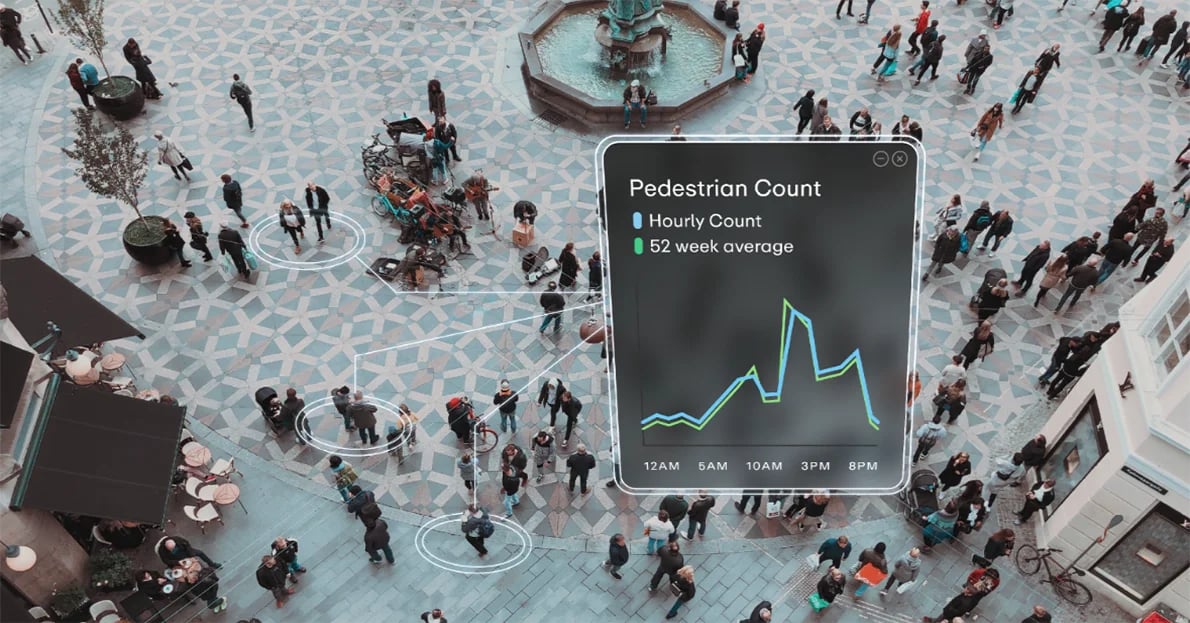Beonic Advances People Counting With New LiDAR Applications

People counting solutions have become critical tools for venue owners and operators who need more advanced information about how visitors use their places and spaces. Capturing detailed visitor metrics like traffic flow, occupancy, and queue length helps them effectively manage their venue and provide a more optimal visitor experience. However, traditional people counting tools like cameras and sensors aren’t suitable for every environment, leaving a sizable hole in the market.
Since our acquisition of CrowdVision and the introduction of LiDAR into our suite of technologies, we’re filling this hole by extending LiDAR applications into new industries, venues, and environments for the purpose of people counting. Read on to learn more about LiDAR technology and how we’re employing it to help our customers better understand their visitors.
How Does LiDAR Work?
LiDAR technology, which stands for Light Detection and Ranging, uses reflected light pulses to detect people and objects. Beonic have LiDAR deployments across in many of the largest airports across the globe, the technology is used to obtain accurate passenger flow analytics, optimise the passenger journey from the curb to the gate, and ensure on-time performance for airlines.
In airport applications, LiDAR provides highly accurate and granular passenger location data with the ability to anonymously measure the movement of each passenger and follow their path of travel through key terminal checkpoints like check-in, security, and immigration. We’re also seeing high demand for LiDAR as a tool for measuring and monitoring curbside traffic at airport terminals.
We’ve worked with airports for years, combining the Airport's existing data systems with our AI-driven data platform to provide operational teams with real-time, historical, and predictive analytics for queue counts, wait times, and overflow metrics.
Improving and Augmenting Traditional People Counting
These capabilities make LiDAR a compelling people counting solution outside of airport environments as well, particularly in areas where traditional tools will be ineffective. For example, LiDAR works well in low-light environments when cameras do not. It’s also ideal for scenarios where privacy concerns may be an issue because LiDAR sensors don’t capture recognisable images or biometric data. Additionally, it provides more accurate counting in crowded or complex environments where traditional methods might struggle. It can also detect other objects, such as vehicles, for movement and count based analytics.
LiDAR is also helpful in scenarios where traditional people counting solutions don’t work well since the sensors can further augment an existing people counting system to monitor areas that are often excluded. These capabilities, coupled with our AI platform, offer venue owners and operators who employ LiDAR a unique opportunity to gain new insight into visitor traffic and behaviour.
Exciting New Uses for LiDAR
Thanks to our new capabilities, we’ve deployed LiDAR in a variety of new venues and environments over the last 12 months. This technology is particularly helpful in settings where tracking accurate and real-team pedestrian or occupant movement is essential. Some of these examples include:
- Retail Stores: We’re using LiDAR sensors to provide in-store analytics specifically for areas like checkouts where optical sensors can pose a privacy risk due to people entering their credit card pins etc.
- Shopping Centres: LiDAR paints a more complete picture of shopping center traffic by capturing visitors in areas traditional camera-based people counters might miss. These include open atrium entries, outdoor dining areas, and assets with multiple buildings and thoroughfares between them to measure walk-bys and conversion rates. LiDAR can track store conversions and cross-shopping behaviours thanks to its ability to identify and measure the movement of unique objects through its field of view.
- Municipalities: We use LiDAR to count pedestrian and bike traffic in parks and other public areas for urban planning and management purposes. In the context of smart cities, the Beonic AI platform can also integrate LiDAR data with other sensors and technologies to enhance overall urban management, including traffic optimisation and energy efficiency.
- Cultural Venues: We’re also using LiDAR sensors to help museums and galleries track visitor numbers and popular exhibits, aiding in curation and space planning. Our AI platform integrates with digital screens in these environments to display queue counts and wait times for patrons entering exhibits with limited space.
These applications demonstrate the versatility and utility of LiDAR technology in providing actionable data that venue owners and operators can use to improve public environments.
Exploring New Tools and Applications
It wasn’t that long ago when venue owners and operators could only make educated guesses about how people interacted with their spaces. Thanks to the continual advancement of people counting sensors, we are supporting our customers in drawing rich insights from the movement of people, enabling them to make impactful, informed decisions that benefit their business and the people who visit their places.
Request a demo to learn how LiDAR and people counting tools can unlock new insights into your venue and its visitors.
